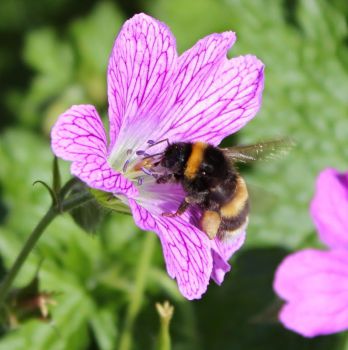News
New study reveals that sweetness is not a bumblebee's only weakness
Posted on behalf of: External Communications
Last updated: Thursday, 8 May 2025

A new breakthrough study by the University of Sussex has revealed for the first time that bumblebees pick the flowers they choose to pollinate based on a variety of factors, and not just the sweetness.
The new research shows that bumblebees can taste protein - specifically the amino acid valine - in nectar and pollen, indicating their flower choices are driven by nutritional value, taste and flavour, and not just sweetness.
It shows bees use taste to evaluate the quality of food before eating – suggesting a more complex decision-making process than previously thought.
Dr Sergio Rossoni said: “This study is important because it shows that bees might decide which plants to visit and collect pollen and nectar from not just based on how much energy (sugar) they gain from them but also based on how nutritious and flavourful the rewards offered by the flower taste to them, just like humans do. Planting a varied mixture of flowering plants is more likely to be beneficial to bees, and improve pollination, rather than single sources.”
Researchers used tiny electrodes to measure nerve responses and discovered that bees can taste specific nutrients like amino acids. As bee populations and crop yields face mounting pressure from climate change and habitat loss, this deeper understanding of bees’ nutritional preferences could help play a part in supporting their survival.
The study goes onto highlight the importance that farmers, gardeners and the public can play in encouraging bees to pollinate, by planting a variety of flowers in gardens and green spaces.
For farmers, integrating a variety of flowering plants alongside crops could enhance pollination and ultimately improve yields and for the public, planting a diverse mix of bee-friendly flowers in gardens and green spaces can help support local pollinator populations.
This work supports the UN’s Sustainable Development Goals: SDG 15 (life on land). You can read more about our work on the SDGs here.